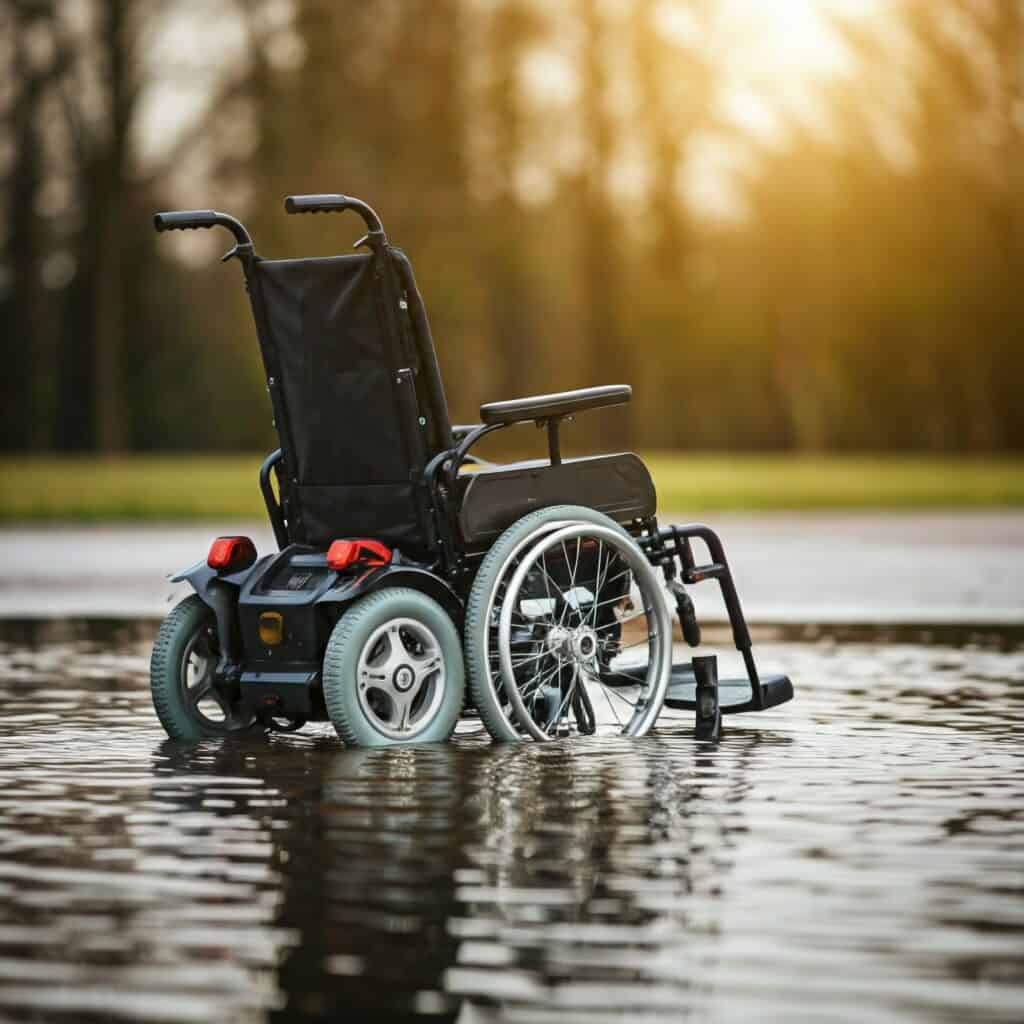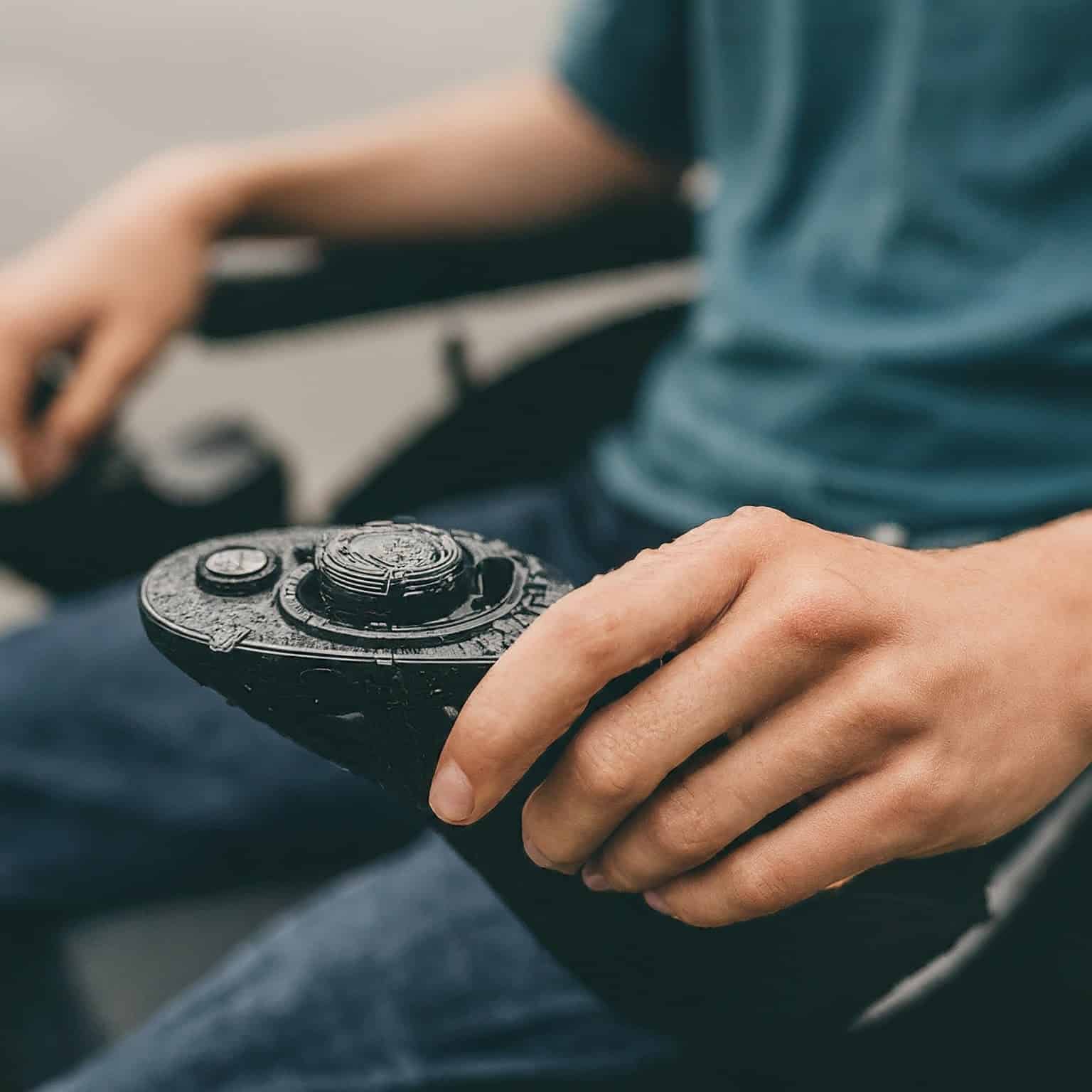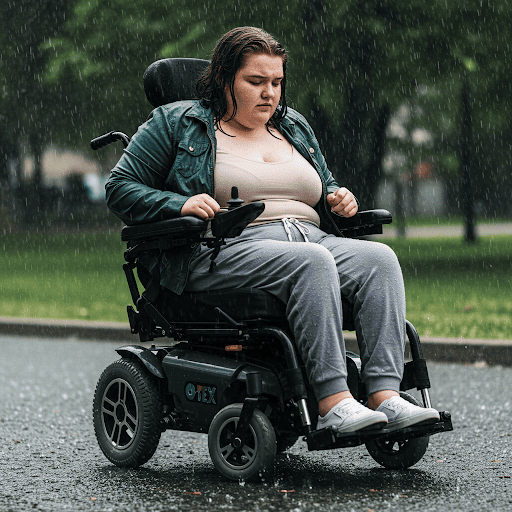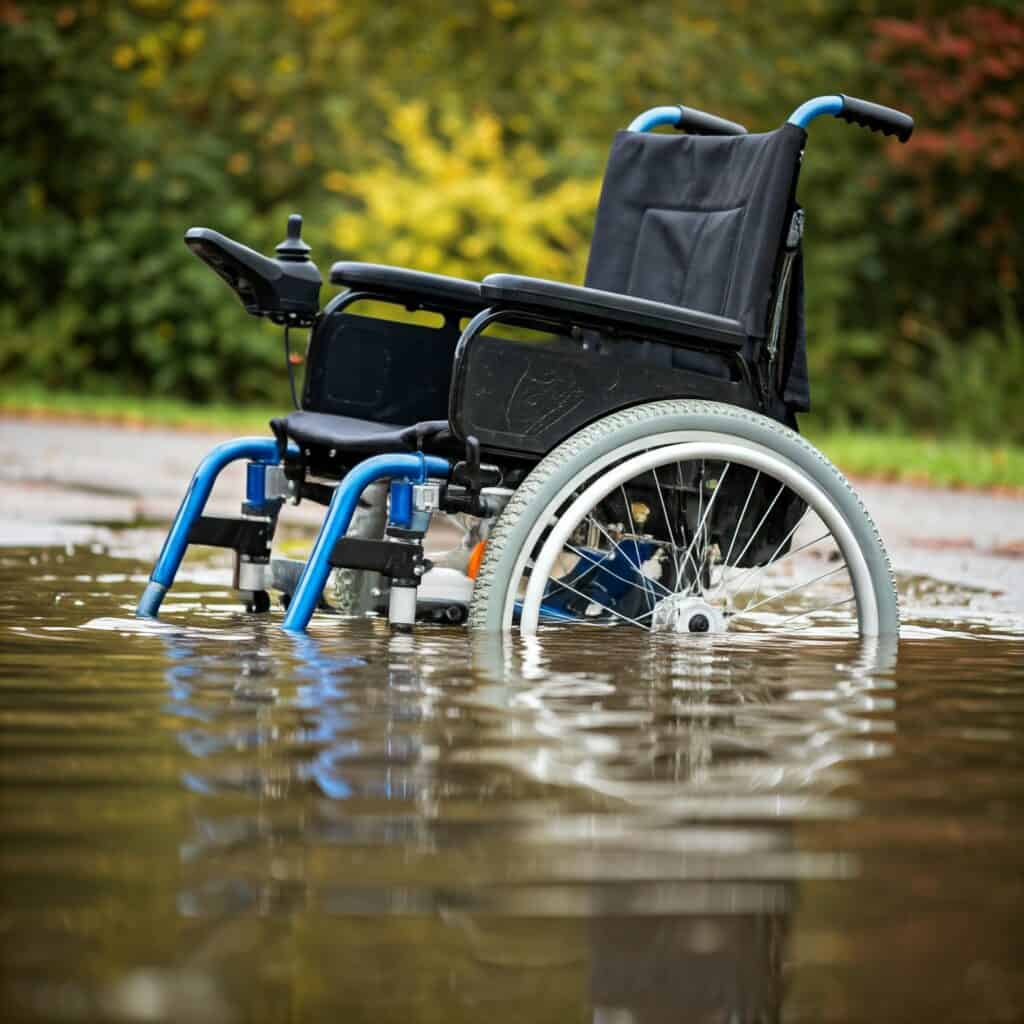Worldwide, approximately $1.6 billion in electric wheelchairs were sold in 2015, a market expected to rise to nearly $5 billion by the year 2022. If you are one of the hundreds of thousands of Americans who has invested in an electric wheelchair for their activities of daily living — whether in Hawaii (the rainiest State in the United States) or Nevada (the driest State in the US with an annual rainfall of just 9 inches) — you need to know whether or not your electric wheelchair is waterproof.
So, are electric wheelchairs waterproof?
So, are electric wheelchairs waterproof? Unfortunately, in most cases Electric wheelchairs are not waterproof. While a well-built electric wheelchair is usually more resistant to moisture and casual exposure to water during everyday use, prolonged or significant water exposure can seriously damage its electrical components and cause corrosion of the metal parts.
Even though electric wheelchairs aren’t waterproof, most users will still need to use them on rainy days and in wet conditions. However, with some basic information about the electrical and structural damage that excessive water and moisture can cause, you’ll be able to protect your wheelchair and feel safer in all weather conditions. Now let’s take a look at the information you need to protect and use your electric wheelchair safely, even in wet conditions.

So, electric wheelchairs are not waterproof?
So, if electric wheelchairs aren’t waterproof, how are you supposed to use them in rainy conditions – and just how wet can they get? Just because an electric wheelchair isn’t waterproof doesn’t mean that it can’t stand up to moisture and even the occasional rain. The question is a matter of degree. As a general rule, minor, temporary and intermittent exposure to water and moisture is not a problem. Problems arise when electric wheelchairs are subject to major, prolonged and regular water exposure.
Driving through or even sitting briefly in a puddle when you can’t avoid it? Not a problem. Submerging most of your electric wheelchair in a shallow pool or lake? Okay, that might be a significant problem. Getting splashed by traffic going through a puddle while minding your own business on the sidewalk? Not a problem. Hosing your wheelchair down almost every day to keep off the dust and dirt? Again, that might be a significant problem. Running errands on a misty, drizzly day? No problem. Going for a jaunt during the monsoon Serason? Once again, likely a significant problem — for many reasons!

The effects of water on electrical and electronic components
Let’s get the obvious out of the way. Unlike a manual wheelchair, an electric wheelchair relies on batteries, charging systems, and electrical components. That electrical system and its electronic components control an enormous range of functions, including instrumentation display, battery charging, charge level monitoring, forward speed, turning speed, reversing speed, direction changes, tilt functions for various mechanical components, joystick-assisted steering and operations, lighting and seat raising and lowering, and braking.
The essential electrical and electronic components of a quality electric wheelchair are well-protected from routine moisture, but even those protections can have difficulty standing up to significant water exposure. Such water exposure wreaks havoc on the operation of electrical and electronic components of a wheelchair.
When electrical and electronic parts are exposed to water or excessive moisture, that water produces corrosion in those circuits, components, circuit boards and contacts. This isn’t an article about electricity per se. Still, the problem is that corrosion creates resistance and causes the temperature in a circuit to increase which, in turn, creates more corrosion. That damaging cycle of corrosion-heat-corrosion interferes with the component’s operation — maybe initially to start, but ultimately completely — and may even result in combustion. (and by combustion, I mean fire!)
Effects of water on the mechanical components of an electric wheelchair
The metal components of a well-built electric wheelchair — the frame, for example — are usually well-protected from exposure to water by being sealed and coated with protective finishes. Day to day use, though, inevitably dings up those metal components and those finishes. Exposure of metal frame components to water can result in corrosion that, depending on its extent, location, and duration, can undermine the structural integrity of the component or wheelchair. When I say corrosion, think rust that effectively eats the elements that comprise the metal your wheelchair’s frame is made of. Even before the structural integrity of a wheelchair is seriously undermined, the metal parts of the wheelchair will look dilapidated and old.

What to do if your electric wheelchair gets very wet
In a perfect world, your electric wheelchair shouldn’t get soaked. But even relatively small amounts of water or moisture can cause some of the problems we’ve talked about here depending on where the moisture is located and how long it’s allowed to linger. Is there anything you can do to protect your electric wheelchair from damage due to water and moisture? Yes! Here now, in four steps, is what to do when your electric wheelchair gets wet. These may seem obvious, but they are easy to forget. You (and your powerchair) will better off if you remember each of these each time your chair gets wet:
- If your electric wheelchair has gotten wet, dry it as completely as you can with a towel or sheet
- As you’re drying your electric wheelchair, carefully check the metal parts of your frame — with both your eyes and fingers. If you notice signs of rust or feel flaking or cracked surfaces, watch them carefully. If they progress, contact a repair service provider to assess the structural integrity of your electric wheelchair
- Whenever possible, park and store your chair in as dry and warm a location as possible, ideally for up to 12 hours (overnight is good, too) to allow moisture that you can’t see or soak up with a towel to evaporate
- If you plan to go out and about with your electric wheelchair after it’s gotten wet — and has been dried and allowed to dry — test out the electronics before leaving home.
- If you notice any loss of electric or electronic function, or any intermittent failures or erratic function, contact your mobility service provider or a repair service provider.

How to protect your electric wheelchair from exposure to too much water
Many electric wheelchair manufacturers design, build, and sell a wide variety of accessories that can help to protect your wheelchair from the potentially damaging effects of water. In particular, there is a wide range of accessories to protect the electrical and electronic components of your wheelchair. For example, many wheelchair manufacturers and aftermarket service and parts providers sell joystick and electrical panel covers that protect them from rain, but still allow full use of them.
Your electric wheelchair can also be protected from excessive water exposure by physical accessories such as a canopy or even full enclosure. What accessories are right for you will depend on a wide variety of factors, including the make and model of your wheelchair, where you live, how often you expect to be out in significant rainfall or moisture, and any financial considerations.
Yes, Virginia, there is a Santa Claus – and a waterproof powered wheelchair option!
Powered wheelchairs empower hundreds of thousands of Americans to be more mobile than they may have been in years past. Electric wheelchairs are highly beneficial, but their vulnerability to water and moisture is a drawback in some circumstances for many people. However, esearchers and innovators have pursued alternatives to electric wheelchairs to provide the benefitss of powered mobility without the downside of vulnerability to moisture and water.
An example of such an innovation that provides mobility in a waterproof way is the PneuChair, developed by the University of Pittsburgh Human Engineering Research Laboratories. Instead of relying on a battery and electrical system for power, it is run completely using pressurized air — and its waterproof!
For the time being however, when asking the question, ‘are electric wheelchairs waterproof?’, the answer in most cases appears to be no. So then, if you rely on an electric wheelchair for your mobility and freedom, you should prioritize keeping that electric wheelchair in the best condition possible and, as we have discussed here, the way to do that is to protect your machine from excessive and prolonged exposure to water and moisture.
